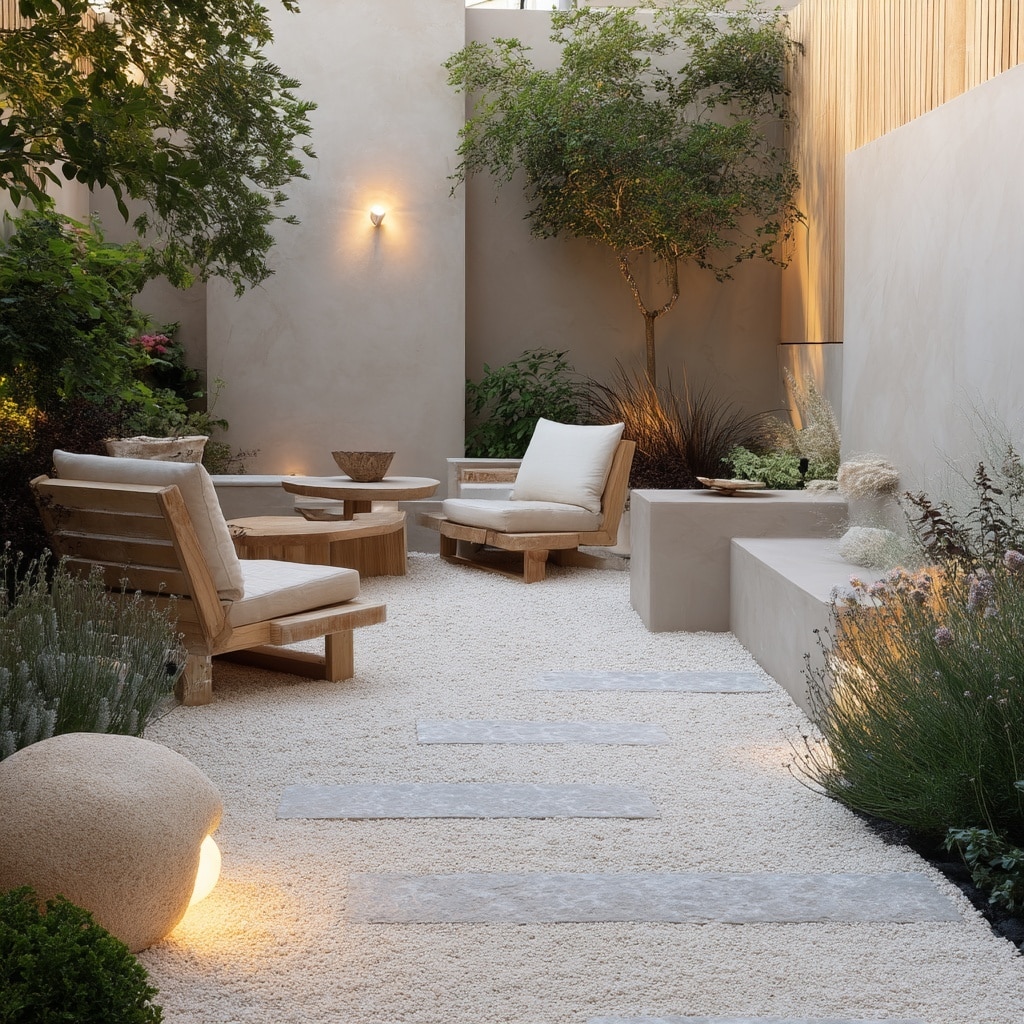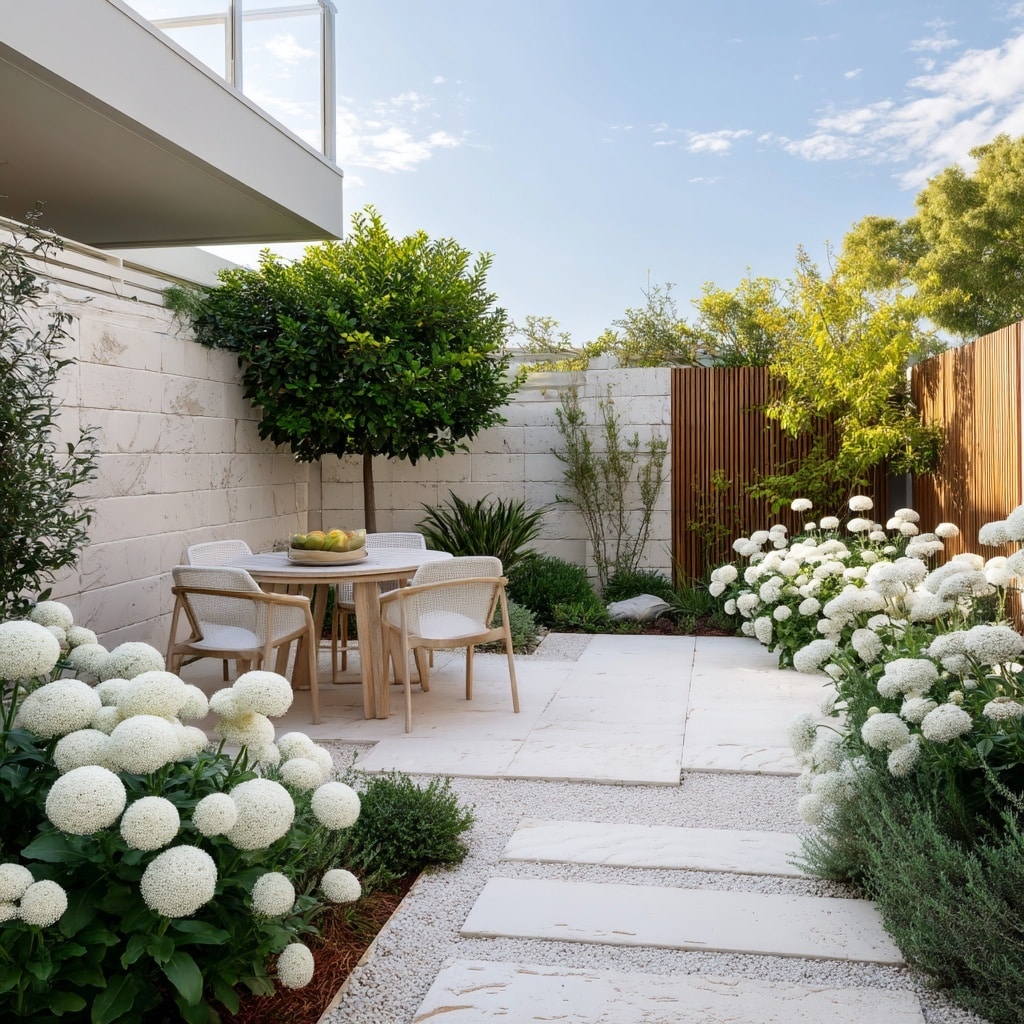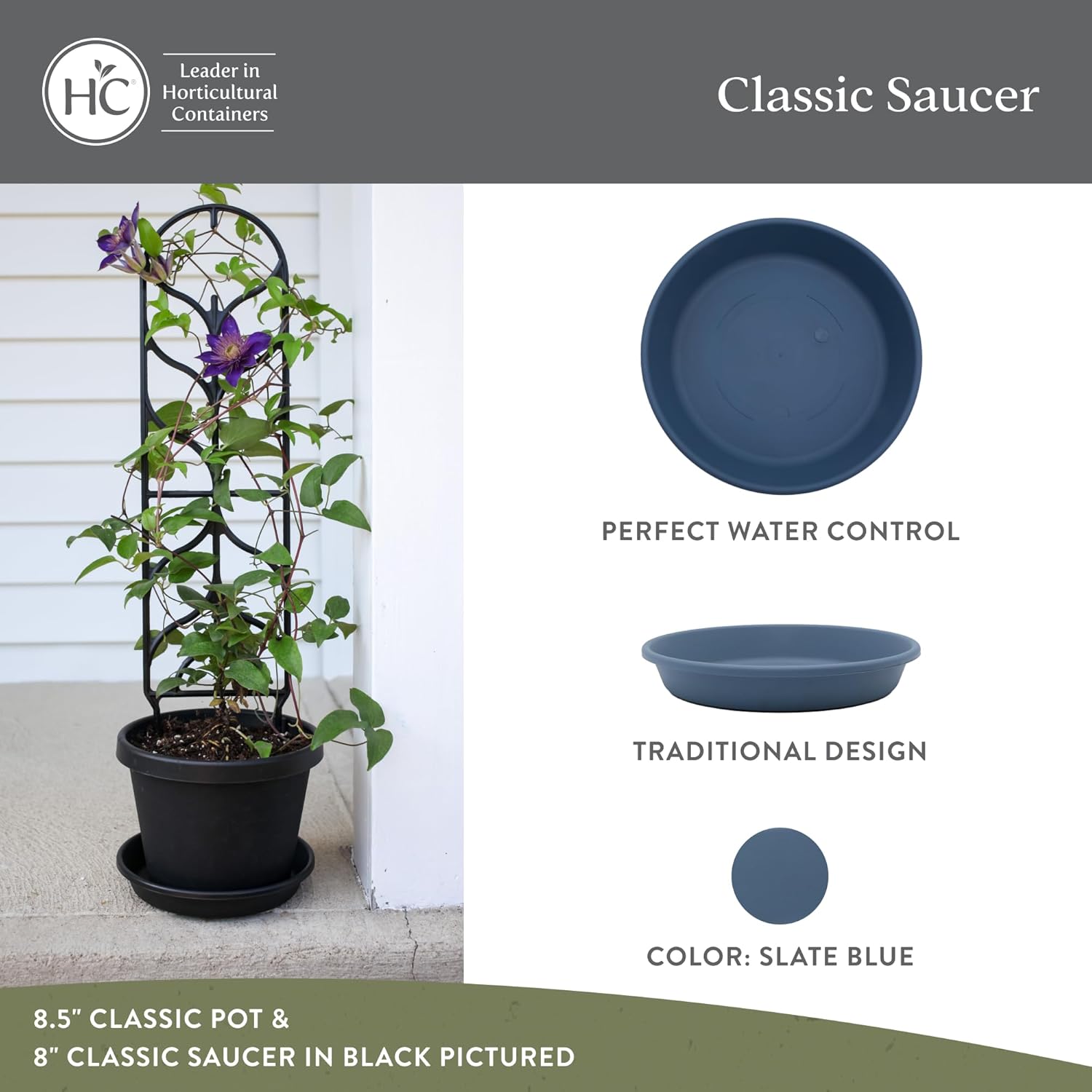Garden design doesn’t have to mean cramming your outdoor space with endless plants, decorations, and patio furniture. In fact, some of the most beautiful and relaxing gardens are those that embrace minimalism—where every element has a purpose, and visual clutter is left behind. A minimalist garden is defined not by what you add, but by what you choose to leave out. Through simplicity, clean lines, and thoughtful plant choices, you can create a backyard retreat that feels calm, modern, and effortlessly elegant. Whether you’re working with a small courtyard or a spacious yard, minimalist garden design offers a timeless approach that prioritizes tranquility over trends.
Table of Contents
1. Stick to a Simple, Cohesive Color Palette
One of the foundations of minimalist garden design is color control. A limited palette helps create a cohesive and uncluttered look, which is essential for maintaining a sense of calm. Instead of mixing too many bright hues or clashing tones, choose just a few complementary colors—ideally no more than three.
For a soft, serene feel, try working with shades of green, white, and gray. These colors blend seamlessly with natural materials and are easy on the eyes. You can also create impact through monochromatic planting. For example, an all-white flower garden can look elegant and ethereal, especially when combined with silvery foliage or neutral hardscape tones.
Don’t overlook foliage either. Variegated plants with creamy or silvery leaves can echo your chosen flower colors while adding subtle texture and interest. Sticking to a consistent palette makes the entire garden feel more intentional and visually harmonious.
2. Limit Materials for a Clean Look
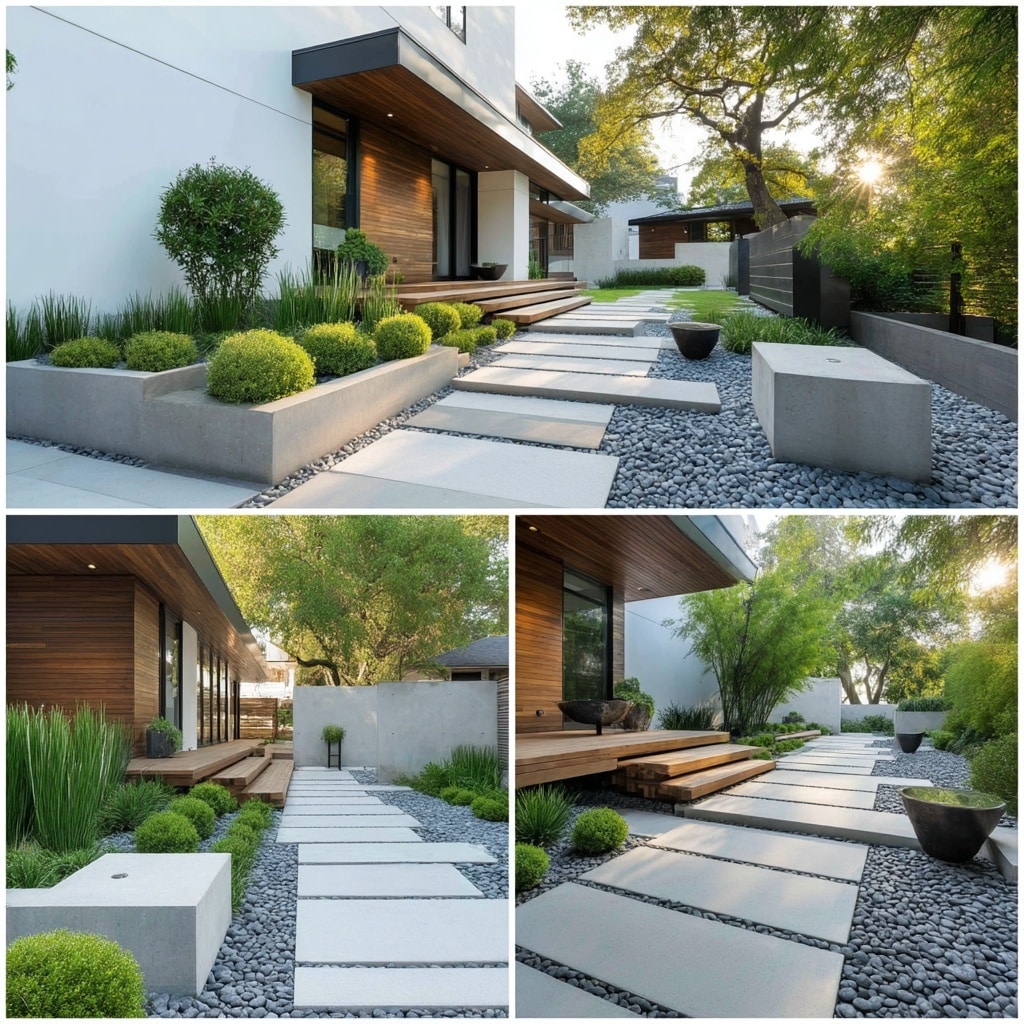
A common mistake in garden design is using too many different materials—stone here, brick there, random wood or metal pieces scattered around. In minimalist gardens, material choice is just as important as plant selection. Keeping it simple helps prevent visual chaos and enhances the clean, modern aesthetic.
Aim to use no more than three types of materials across your garden. For example, a combination of poured concrete, natural wood, and fine gravel creates a balanced contrast of texture without feeling busy. These elements work together to create a unified look that supports, rather than competes with, the plants.
Consistency is key—use the same materials for planters, borders, and seating where possible. Whether you’re working with decking, paths, or garden furniture, repeating those materials builds rhythm and cohesion throughout the space.
A limited material palette allows your minimalist garden design to feel focused, polished, and intentionally serene.
3. Choose Neutral Tones for Timeless Appeal
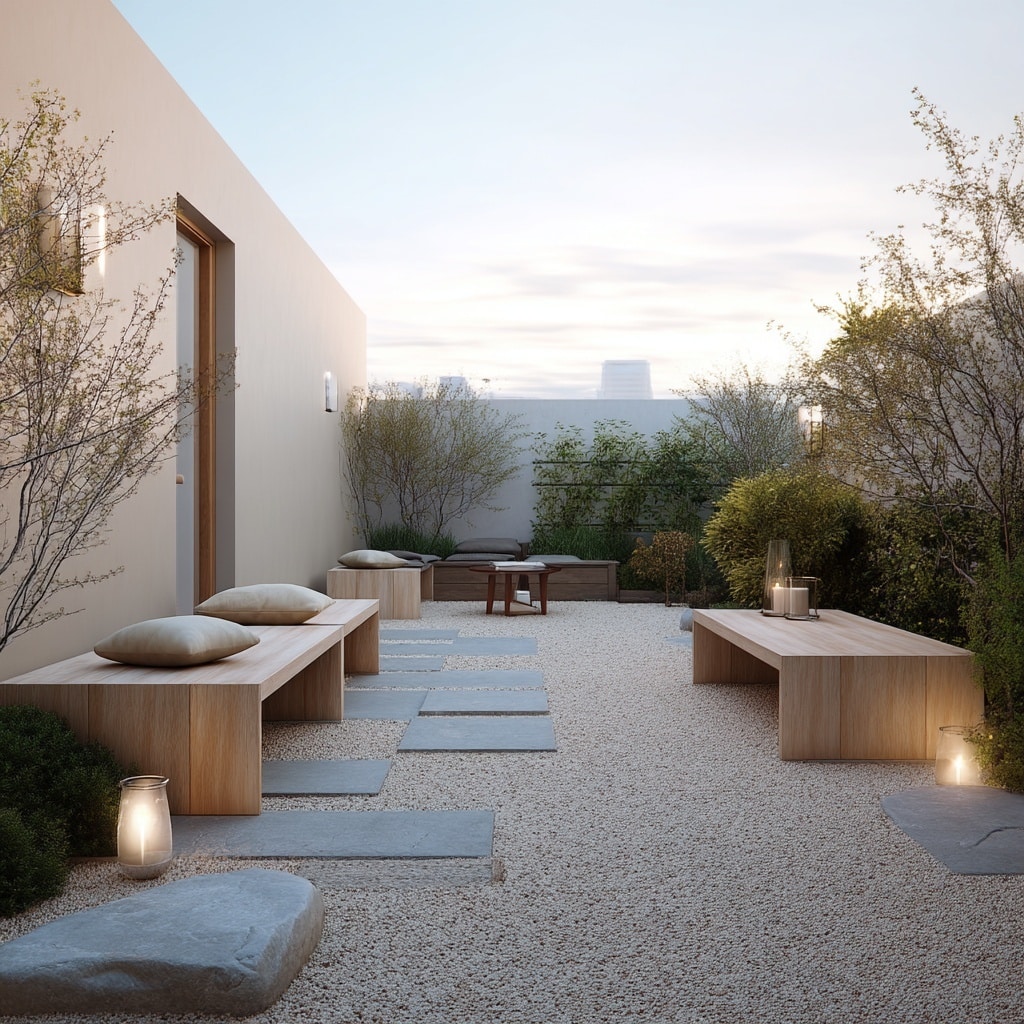
Color plays a powerful role in garden design, and in a minimalist space, neutral tones lay the foundation for a calm and cohesive atmosphere. Think soft grays, warm beiges, taupes, and off-whites—colors that create a subtle backdrop without demanding attention.
Neutral-colored hardscaping like pale gravel, light concrete pavers, or muted decking helps unify the space. These tones allow your plants to stand out while keeping the overall design understated. Even your plant choices can follow a neutral strategy. Look for ornamental grasses, soft green foliage, and flowering plants with gentle shades like cream or pale lavender.
Neutral doesn’t mean boring. It gives your garden an elegant, timeless appeal and offers flexibility as styles evolve. By keeping your core color scheme neutral, you can always introduce a pop of seasonal color—like a single red planter or a few vibrant blooms—without overwhelming the minimalist aesthetic.
Used thoughtfully, neutral tones anchor your garden design in simplicity and style.
4. Use Repetition to Build Rhythm and Flow
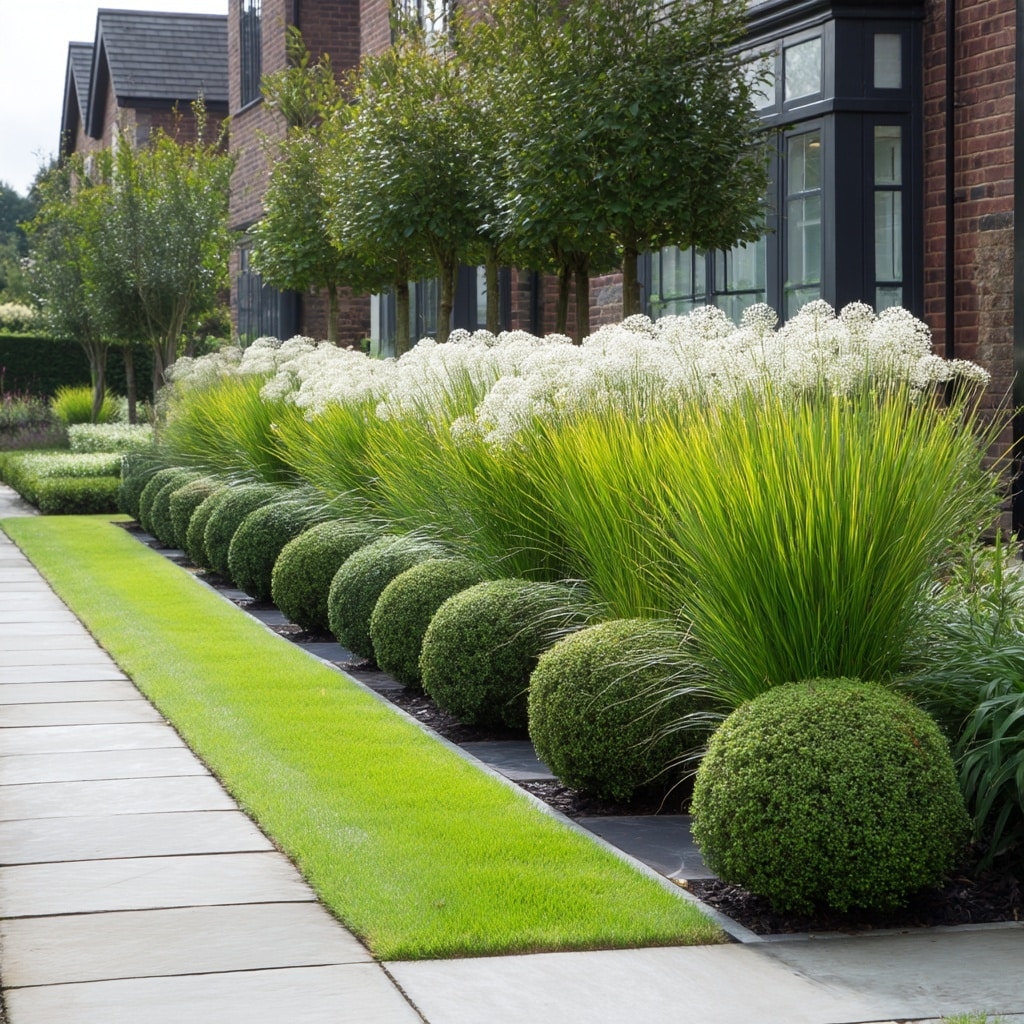
Repetition is a powerful tool in minimalist garden design. By repeating shapes, colors, or plant types, you create visual rhythm that guides the eye and brings a calming sense of order to the space. This technique is especially useful in small or narrow gardens, where too many varied elements can feel chaotic.
You might line a path with identical shrubs, like clipped boxwood or ornamental grasses, or use the same type of paver throughout the garden. Repeating a single plant—such as lavender, miscanthus, or Japanese holly—along borders or in raised beds can instantly add structure and balance.
Even repetition in planters or lighting fixtures can contribute to the garden’s flow. The key is consistency: when each element echoes another, the overall design feels more intentional and relaxing.
Minimalism doesn’t mean plain—it means everything has a place and purpose. Repetition reinforces that discipline in your garden design while enhancing both form and function.
5. Keep It Functional and Purposeful

A successful minimalist garden design balances beauty with practicality. Every item you include—whether it’s a bench, planter, or pathway—should serve a clear function. This focus on usefulness helps eliminate clutter and keeps the space feeling open, breathable, and intentional.
Choose furniture that doubles as sculpture, such as a sleek stone bench or a wooden seat with clean lines. Built-in seating or raised beds can save space and add architectural interest. Pathways should guide visitors smoothly through the garden, without unnecessary detours or distractions.
Water features, lighting, and decor should also have purpose. A single birdbath or a sculptural planter can act as a focal point without overwhelming the garden. Keep accessories minimal and meaningful.
When everything has a reason to be there, your garden design becomes more than just visually appealing—it becomes a retreat where form and function work in harmony.
6. Hide the Clutter to Preserve Clean Lines
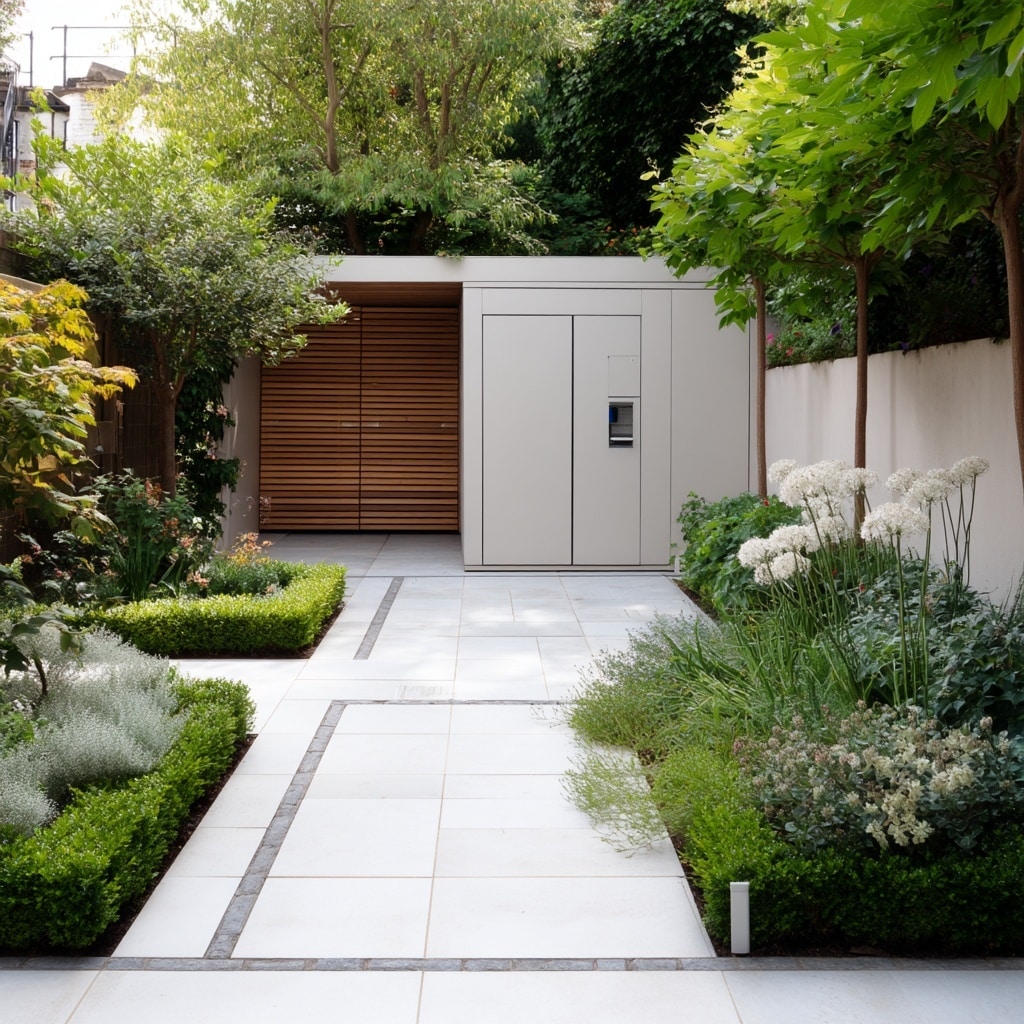
Nothing disrupts minimalist garden design faster than visible clutter. Hoses, tools, bags of soil, and random decor can easily distract from the calm, ordered feel you’re aiming to create. The solution isn’t to get rid of everything—it’s to store it smartly.
Incorporate discreet storage options like low-profile sheds, benches with built-in compartments, or wall-mounted boxes painted to match surrounding surfaces. Keep garden hoses wound up and hidden, and avoid leaving tools or containers out in view. Even compost bins can be tucked behind screens or foliage if needed.
Minimize how much you bring into the garden, too. Resist the urge to overplant or crowd your space with pots and accessories. Every item should have its place—and when not in use, it should be tucked out of sight.
Maintaining clean lines and tidy edges supports a minimalist garden design and helps the space feel peaceful and distraction-free year-round.
7. Make the Most of Small Spaces
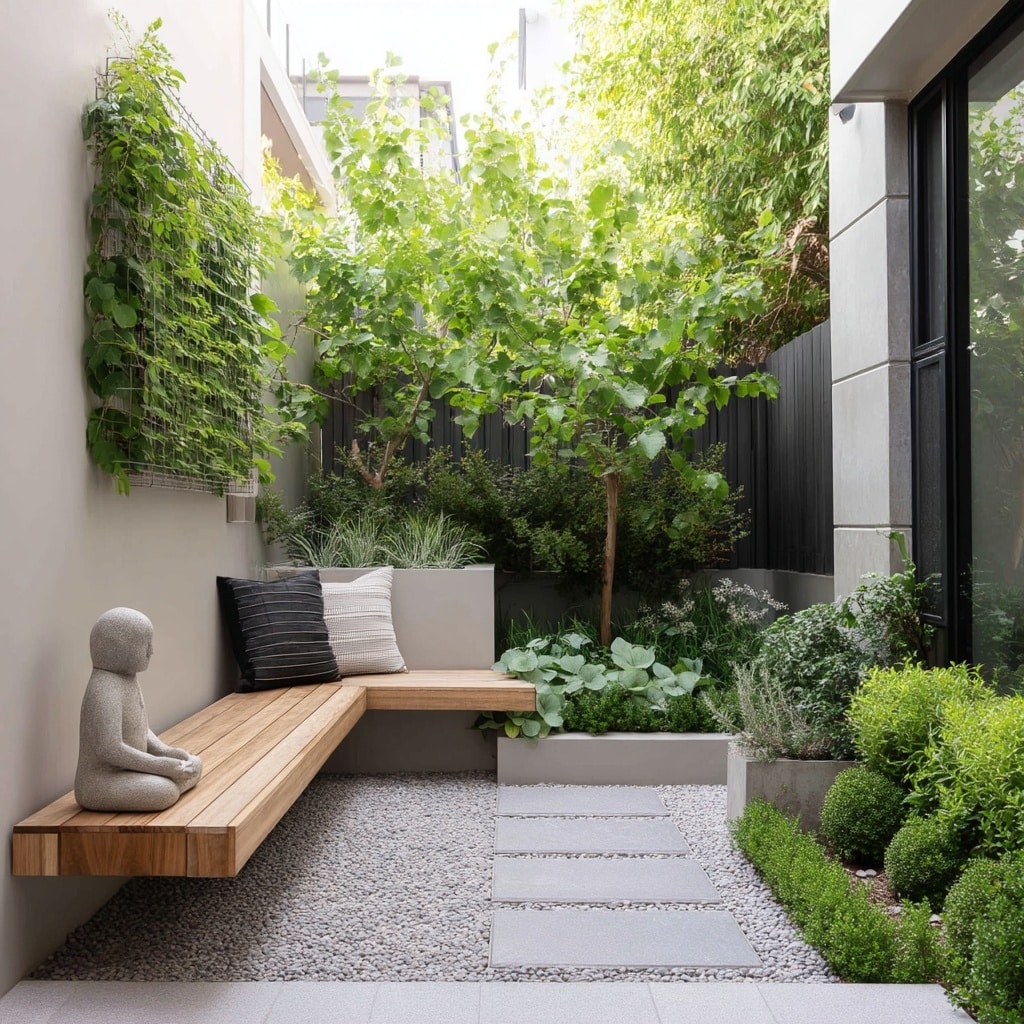
Minimalist garden design is perfect for compact backyards, side yards, and even small patios. In fact, limited space can make design decisions easier—fewer square feet mean every plant, stone, or piece of furniture must earn its place.
Instead of trying to squeeze in everything, focus on creating a single calming retreat. Use just a few plant varieties, ideally those with sculptural shapes or soft movement. Add a simple bench or stool for seating, and define the space with subtle borders, like gravel, wood, or stepping stones.
Vertical elements, such as tall planters or wall-mounted greenery, can add height and dimension without cluttering the footprint. Keep the color palette and materials consistent to avoid overwhelming the eye.
Even the smallest courtyard or balcony can feel open, airy, and soothing when guided by minimalist garden design principles. It’s not about size—it’s about clarity and intention.
Conclusion
Minimalist garden design isn’t about stripping everything away—it’s about choosing what matters. With clean lines, simple materials, and thoughtful plantings, you can create an outdoor space that feels calm, elegant, and refreshingly low-maintenance. Whether you’re working with a small courtyard or a larger backyard, these minimalist principles help you design a garden that’s both beautiful and functional.
Start with a clear color palette, reduce visual noise, and focus on structure and repetition. Hide clutter, keep features purposeful, and always prioritize balance. When done well, a minimalist garden becomes more than a space—it becomes a sanctuary.

